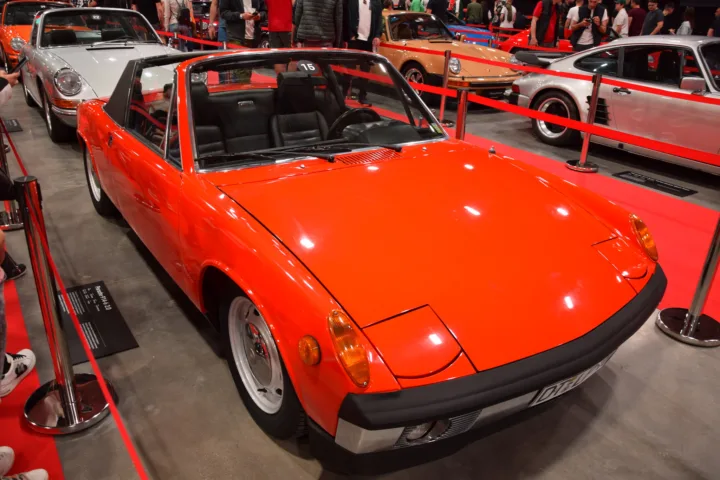Porsche 914: a different perspective
Launched 55 years ago, the 914 was something completely new for Porsche. It was the brand's first mid-engine production car, the first to be offered only as an open-top version, and the first to be designed as a new model line that was different from the rear-engined cars. The 914, which made its debut in September 1969 at the Frankfurt Motor Show, was Porsche's third completely new production car piese auto online.

The Vierzehner, or “fourteener,” as the Germans call it, was ahead of its time in many ways, but in 1969 it looked foreign compared to the elegant classics that brought Porsche true world fame. The car’s design did not elicit the expected positive reviews, and perhaps for this reason the company never promoted the name of the stylist who designed it in the media. What is officially published is that the model was the fruit of the joint work of two inextricably linked automobile companies: Porsche and VW, the former wanting a completely new model but unable to afford it, and the latter wanting to enrich its range with a fresh design. And this is completely logical, since in the mid-1960s the Karmann Ghia was already looking quite outdated, and its replacement with a completely new model was urgent.
An agreement was reached between the two companies, according to which Volkswagen engaged Porsche to design a sports car to be produced by Karmann. It was decided to equip it with VW's new 1.7-liter boxer four-cylinder engine, intended for the future modern VW 411 fastback, while the front suspension, steering and five-speed transmission were from the Porsche 911. The car was launched in Europe as the VW-Porsche, but on the American market it was sold only as the Porsche. The interior also mixed familiar elements from VW and Porsche.
In 1964, when the design team in Zuffenhausen took over the VW-Porsche project, it considered several concepts, including exterior proposals, but then went its own way. In early 1966, the final exterior design, designed by Porsche's then chief designer Heinrich Klie, was approved.
In addition to the driving advantages, the mid-engined variant had a luggage compartment at both the front and rear, making it a true touring car, with a hardtop roof panel that stowed away in the rear compartment. This configuration, combined with the characteristic design, clearly set the 914 apart from the 911. Visually, the car differed significantly not only from other company models, but also from the sports models of other companies, and at its premiere in 1969 it proved to be remarkably individual in terms of design.
Unfortunately, the 914 was doomed from the start in Europe, where it was seen as a VW-Porsche, but not as a VW or a Porsche. But everyone agreed on one thing: it offered incredible handling, intelligent design and admirable efficiency. The chassis was developed by legendary Porsche engineer Helmut Bott and proved its worth at Le Mans in 1970, where it won the GT category, took sixth place overall, and fourth in the Efficiency Index.
Between 1970 and 1976, a total of about 119,000 copies were produced, which is actually a very good achievement.
- 2025-07-26 - Change of strategy: Fiat brings back internal combustion engines
- 2025-07-25 - Used sports limousines: Audi S7 Sportback (C7)
- 2025-07-23 - Dacia Duster Hybrid vs MG ZS Hybrid: comparison test (VIDEO)
- 2025-07-22 - The new Mazda CX-5 – smarter and more spacious (VIDEO)
- 2025-07-21 - Xiaomi YU7: the new electric SUV from the smartphone manufacturer (VIDEO)
- 2025-07-19 - Automotive supplier expands production in Bulgaria and creates 300 new jobs
- 2025-07-17 - FIAT now offers a small all-electric truck
- 2025-07-16 - Bravo, ID.3: over 90% battery capacity after 160 thousand km
- 2025-07-15 - GAZ-13S "Chaika": the Politburo ambulance
- 2025-07-14 - From Romania to Greece by electric car: how much does it cost?












